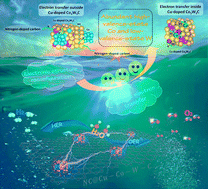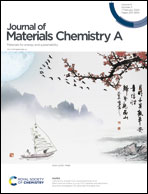Achieving electronic structure reconfiguration in metallic carbides for robust electrochemical water splitting†
Abstract
Developing transition metal carbides (TMCs) as multifunctional electrocatalysts to catalyze the oxygen evolution reaction (OER) and hydrogen evolution reaction (HER) has been attracting increasing attention. Unlike traditional single-source modification, a novel nitrogen-doped carbon-hosted TMC catalyst with dual transition metals to modulate the electronic structures of tungsten carbide is reported here. It enables implementation by introducing copper from a prefabricated core–shell CuWO4@ZIF-67 precursor and subsequently with an annealing treatment, which not only maximize the active Co and W sites, but also enable the construction of a good interconnected conductive network. Consequently, the optimized nitrogen-doped carbon-supported polymetallic carbide catalyst synthesized at 700 °C (denoted as S-2) with a suitable structure and composition configuration exhibits decent activities with ultralow overpotentials (η) of 238 mV and 98 mV at 10 mA cm−2 for OER and HER, respectively, along with good overall water splitting performances, surpassing that of majority of TMCs. This work paves viable ways for the rational design and regulation of the local electron structures of metallic carbides by introducing appropriate transition metals.



 Please wait while we load your content...
Please wait while we load your content...